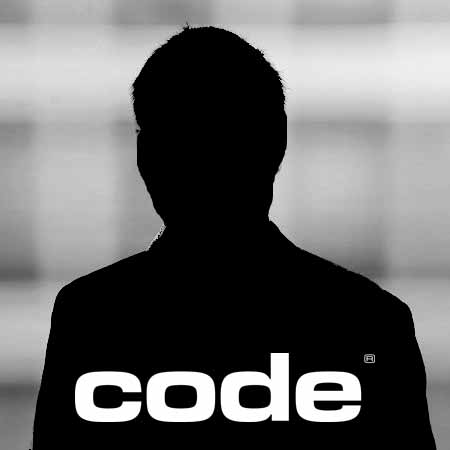How Can Health IT Depts Smoothly Migrate to Better Patient Medical Scanners?
Whether it’s today’s healthcare group or yesterday’s early humans, migration drives success. Ancient tribes migrated to follow food, secure resources, or seek safety. Fast forward 70,000 years, and health IT departments face similar issues that prompt device migration.
Three Reasons Hospitals Switch Barcode Scanner Brands
- Dissatisfaction—User feedback is a hospital make-or-break. If barcode scanners slow nursing workflows or degrade data capture metrics set internally or by The Joint Commission, end users push for change.
- Pricing inconsistencies—Manufacturers may discount large-scale buys (e.g., equipping a new wing). Afterward, buyers expect a modest price creep on subsequent purchases; however, a three-digit price increase for lower quantities of the same device spurs reevaluation.
- Availability—Barcodes and barcode readers prevent deadly medication mix-ups, support device sterilization, and capture data for Electronic Health Record (EHR) and Electronic Medical Record (EMR) systems. So, healthcare facilities can’t be without medical barcode scanners, particularly when opening a new wing or floor. If a manufacturer can’t meet an order, the hospital scraps the deadline and bears tremendous additional costs.
- Semiconductor-related challenges keep rattling supply chains in 2023. However, Code has maintained a supply of primary products, including the healthcare-focused CR2700 Barcode Reader, enabling Code to displace competitors in hospitals throughout the Americas and EMEA.

These are the primary reasons why hospitals will migrate to a new barcode reader supplier.
Before requesting availability and as-delivered pricing, ask yourself if any of the above are spurring a desire to switch. If your list isn’t solid, it’s not time to migrate. If it’s time, here’s how hospitals shop for barcode scanners.
How to Evaluate Barcode Reader Manufacturers
Assuming comparable price, performance, and availability, the manufacturer’s rep becomes the wildcard because the deal is in the details.

The right rep should be able to easily (or quickly get you) the answers.
- Sweat the details—they’ll check that the kit is correct (i.e., mounting brackets, cabling, and EHR or EMR system specifics).
- Be on message—stakeholders will remain updated on the kit, quantities, and final costs.
- Triple-check—proactive reps verify equipment with the group performing the install.
And that’s just on the customer-facing side.
Behind the scenes, an enterprising rep syncs with the tech reseller (sometimes called a value-add reseller or VAR) that the hospital will purchase from because manufacturer-to-reseller miscommunication is costly. For example:
- Adding a device mount to an order could add $50/kit, escalating costs over dozens (or hundreds) of units.
- An improper SKU means needlessly reprogramming hundreds of devices that weren’t factory-programmed for the hospital’s EHR.
What Questions Should I Ask a Manufacturer’s Rep?
All of them. Extensive Q&A distinguishes a reliable partner from a revenue-driven “order taker.” If you find yourself continually referred to the manufacturer’s tech reseller, you’re not talking to the right manufacturer.
- Besides hardware, what other expenses are involved?
Examples include storage for incoming devices. - What is the rep’s plan for large-scale migration?
Avoid surprises by knowing if they’ll switch out floor by floor and not device by device. - What’s a reasonable lifespan for their devices? Moreover, are they scalable?
Prevent device-level difficulties if your hospital migrates EMRs in three years. - Does the barcode reader manufacturer have multiple workflow options for your group’s needs?
The right manufacturer rep focuses on getting the right tool into your nurses’ hands, even if it isn’t the most expensive one. This flexibility demonstrates they’re a resourceful problem solver—they’re not worried about sales, they’re worried about success. - Do I like working with this person? Are my interests represented?
If evaluation is labored or you don’t work well with the manufacturer rep, keep shopping.

The rep is almost as important as the devices are; the right rep is thorough, stays updated, and shares info freely
Successful Device Migration Needs Early Buy-in
From primitive cave etchings in red ochre to Zoom meetings, communication sets the tone for migration.
Clear communication enabled tribes to migrate without undue conflict or risk—everyone shared what they knew, and everyone knew what was at stake. Similarly, every stakeholder department is dedicated to facilitating the administration of life-saving care while maintaining a viable hospital. But they may have different perspectives on achieving this common goal. While getting the buy-in of nurses is a given, think holistically about every set of hands using or maintaining your barcode readers:
- Network engineers—Seek early buy-in from this influential group because they oversee operation. For instance, the firmware on Code barcode readers can be updated remotely, conserving labor and time (i.e., 15-20 min/device) for a group doing more with increasingly less. Knowing early on about resource-saving tech will rally them behind your choice.
- Desktop services—This group’s manager ensures all equipment is present before their team physically switches devices. Proving to this group that barcode scanner migration is relatively simple is a must because they carry considerable weight in decision-making.
- Housekeeping—These frontline associates carry out infection control protocols by cleaning patient rooms and sanitizing barcode readers. Don’t overlook them. You don’t want to discover that the cleaner they’ve used destroyed your devices six months after install. Partner with the manufacturer rep to clearly convey what disinfectants the staff may use and create well-documented processes.
Leveraging Institutional Knowledge
Large-scale migration requires coordination, communication, and consideration for every department handling the barcode scanners. Just like the earliest migrating humans, pooling institutional knowledge ensures whatever route the hospital selects will be the right one.
Making the right move starts by emailing info@codecorp.com or calling 801-495-2200. Code’s healthcare barcode scanners are in stock, and our data capture experts across the Americas and EMEA are ready to help.
Share This Post
Author

Paul Garcia
Many of the talented and qualified staff at Code Corporation contribute to our blog. Our team members add a unique perspective to our communications efforts, and we are fortunate to have such a great cadre of writers as part of our company.
